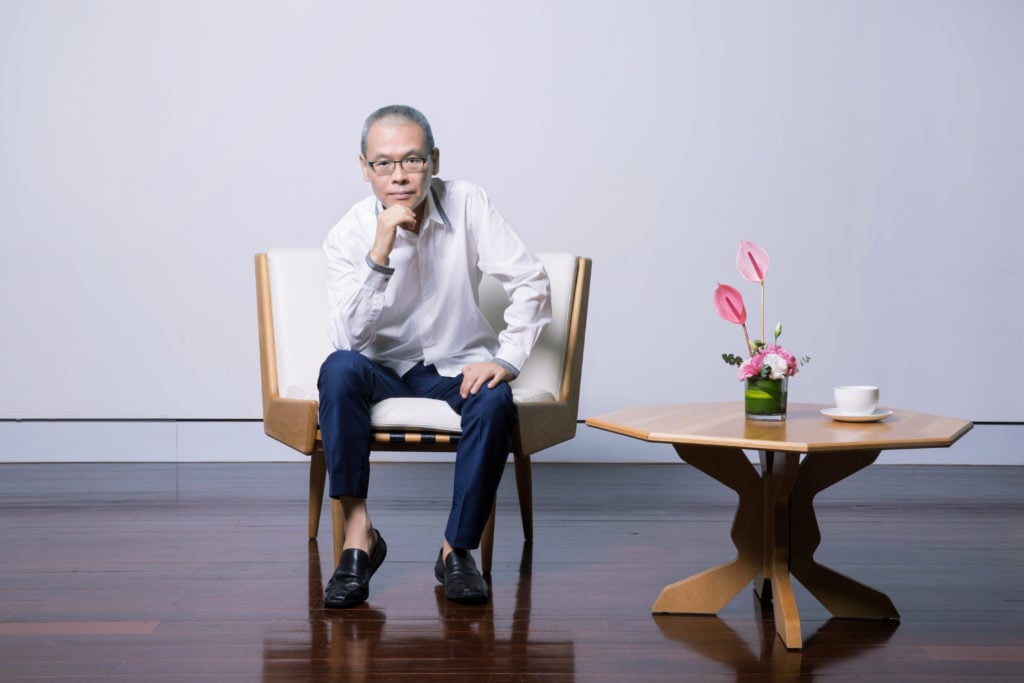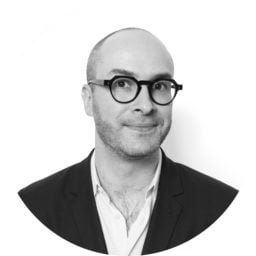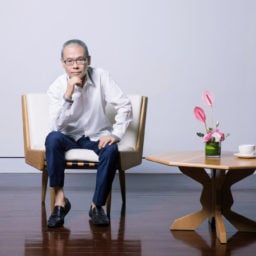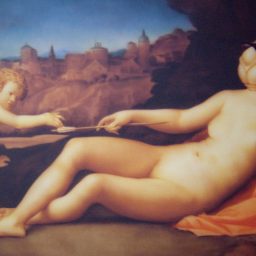An outsize figure in the small but growing world of Chinese contemporary art, Budiardjo “Budi” Tek has always been a man in a hurry.
Born in Jakarta a little over 60 years ago, he made a fortune as the head of the vertically integrated poultry company PT Sierad Produce Tbk and began using his money to buy art in 2004. Things happened in quick succession after that: his collection grew to more than 1,500 pieces—with a focus on the Chinese contemporary art of the politically turbulent 1980s and ‘90s—and then he founded a museum for his collection in a 9,000-square-foot former aircraft hanger in Shanghai’s West Bund, naming it the Yuz Museum after the possessive of his Chinese name, Yu Deyao (so: Yu’s Museum).
Since then, he has produced dozens of shows, from spotlights on rising stars to landmark surveys of Giacometti and Warhol to blockbuster showcases of popular “mega-works”—to use Tek’s term—like Rain Room. His Yuz Foundation sponsored a Zeng Fanzhi show at the Musée d’Art Moderne de la Ville de Paris; and in 2017, he was awarded the French Legion of Honor.
One reason for Tek’s rapid pace is that his time has been cut precipitously short. Diagnosed with pancreatic cancer in 2015, he was initially given little hope of outlasting the year, but through a battery of treatments, combined with remarkable tenacity, he has managed to survive longer than the vast majority of people with the virulent illness.
On the phone, the collector betrays no trace of sluggishness—in fact, he is a wellspring of ebullience and sly humor, particularly when talking about his dream: to transform his private Yuz Museum into a public institution and thereby lay the groundwork for his adoptive country of China, which to date has no real museums of contemporary art, to more fully embrace the extraordinary cultural output of his time.
Last year, Budi, who had struggled to bring his vision to life on his own, stunned the world by announcing that his Yuz Foundation would be joining with the Los Angeles County Museum of Art in a historic partnership that would ensure his museum would outlast him.
Here, in part one of an interview with Tek—which has been edited and condensed for clarity—artnet News editor-in-chief Andrew Goldstein spoke to the collector about why he feels China needs his museum to last and the challenges he encountered finding a way forward. In the second half of the interview, Tek will address the LACMA deal and what it holds for the future.
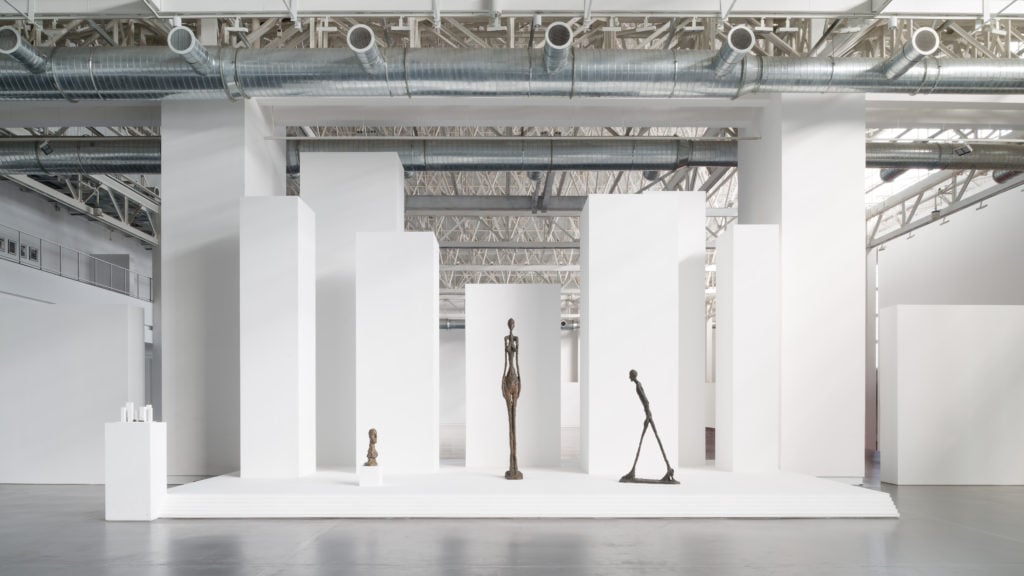
The Yuz Museum’s 2016 Giacometti retrospective, the first such show of the artist in China. Photo courtesy of the Yuz Museum.
You first began collecting art seriously 15 years ago. Now, you have a foundation and a massive museum in Shanghai. Most importantly, perhaps, you are revolutionizing the very idea of what an art museum can be in China, partly through your historic partnership with LACMA. That’s a lot to have accomplished in a relatively short amount of time. Most interestingly, it seems to be in the service of a larger idea. The Yuz Foundation lists that one of its core principles is to promote the “art museum movement.” What does that mean?
Years ago, when I made that statement, there weren’t any truly serious institutions in China with substantial collections in contemporary art. After my good friend Uli Sigg donated the bulk of his collection to M+ in Hong Kong [in 2012], we collectors discussed the fact that if you wanted to see Chinese contemporary art history [at that time], you had to travel from China to Hong Kong.
That worried everyone, including me. But I was optimistic. I said to my friends, “I think that China will soon have a museum movement,” and in three years, we saw many private museums established, including the Yuz Museum. The judgement about the art in the Yuz Museum should be made by objective individuals like yourself, but I can say that it was one of the first serious contemporary museums in China, especially in Shanghai.
I was very proud that Shanghai could become one of the pioneers of the museum movement. About a year after we established the museum, I was invited to London to talk with other private museum owners, and the last question they asked everyone was, “What do you want your museum to be 30 years from now?” Everyone said they wanted to be like MoMA, or Tate. I said that I didn’t know what would happen 30 years from now, but that if you look around New York, you have the Frick, the Whitney, the Guggenheim—all of these were once private museums. I wanted the Yuz Museum to also one day become a public institution.
There are several important state-run historical museums in China, and then there is a small but growing number of significant private museums in Shanghai, Beijing, and elsewhere in the mainland. But there aren’t any real state-run contemporary art museums in China. Why is that? It’s widely understood that an engagement with contemporary art creates a certain kind of soft power that, together with cultural and economic capital, could be useful for a country as ambitious as China.
The government people may see the contemporary art museum as a cultural phenomenon that isn’t comprehensible to non-art people. And you can’t blame them, because China has a 5,000-year history, and we have such rich historical art and culture. But I told my friends that when we glorify our ancestors, we need to also glorify ourselves; future generations will be proud of us because we did something to preserve this contemporary moment.
But then, at the same time, frankly speaking, the majority of so-called “artworks” in the world are actually crap. They are very commercial. When we look back 50 or 100 years from now, which ones will actually remain in the history of art? This is a very long process, and that’s why it’s fair enough to say that the private museum will be the pioneer to help establish the soft power of the future. I think the state contemporary art museum will one day harvest our hard work like a farmer, but you need to plant before you can harvest.
Because I got pancreatic cancer three years ago—and I’m still alive three years on, and I intend to survive long into the coming years—the urge in my heart is to do something before I’m gone. If I wasn’t sick, it might have taken me another five to 10 years to think of what I’m thinking today. But because of this sickness, this crisis, I had to speed everything up, and that’s what led me to the conclusion that I need to turn the Yuz Museum to a public institution.
Of course, it’s very difficult. I would need to donate the majority of my collection to a public foundation in order for the government to support us. But if I don’t do this, people would say, “You know, Budi, you’re not doing anything, you’re just talking.” So when I met Michael Govan from LACMA, I said, “Would you like to help push that transformation of a private museum into a public museum in a very short period of time?” When I talked to him, I didn’t know if I’d survive six months or a year. So the crisis has actually pushed me to “mission impossible” mode.
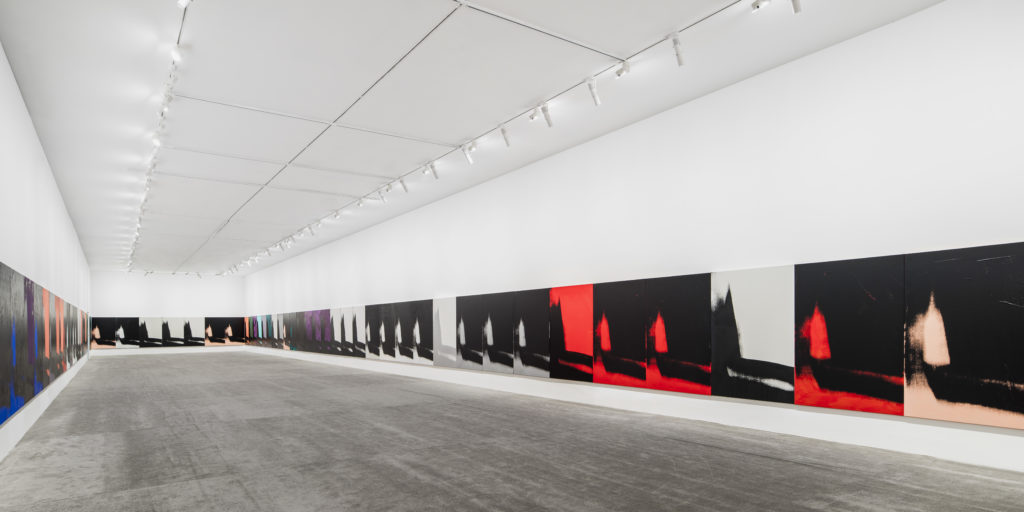
The Yuz Museum’s show of Andy Warhol’s “Shadow” series in 2016. Photo courtesy of the Yuz Musuem.
You’ve spoken often about your desire to share your art collection with the world, to make it public. Why is this important to you? Why does the world need your art? What use is it to the world?
I believe I’m the second person to assemble a rather rich, if not complete, collection of Chinese contemporary art from the 1980s to 1990s, a period that is very important to the history of art in China. I collected hundreds or even thousands of works of art—and here we are not talking about Budi, we are talking about the Yuz Foundation.
So, this is the kind of valuable collection—although I bought it about 15 years ago for relatively reasonable prices at the time—that some members of my family who love art will keep, but others who may not love art? If they see a good price, they will sell it! Both me and my wife Michelle, who is herself a very important figure in this field, think that it’s better if we keep the collection in one piece so we can leave a legacy, rather than to give away the art to family members.
We’ll be establishing the kind of legacy that can actually benefit every member of my family—because the name Yuz, the name Tek, would benefit them more in the future than an extra dollar would. This collection may not be important in the West in the history of art, but it is very important in China. And, again, then you won’t need to go to Hong Kong to see contemporary Chinese art history—you can go to Shanghai! Of course, if the collections in Shanghai and Hong Kong combined, it would be very complete.
I believe there are close to 1,500 private museums in China, but because the phenomenon of private museums is relatively young there, it doesn’t seem like there is an established mechanism for these museums to outlast their founders. Why is that?
The majority of the so-called “private museums” don’t have collections. This is actually the critical problem. Because the government would like culture to be a part of everyday life, they provide incentives for real estate developers to include a kind of cultural setup in their plans. I’m proud that we’re in a moment when the government is supporting the culture, but it also means that many of the so-called “private museums” are actually just exhibition halls. One day in the future—maybe another five, 10 years—they might start to realize that museums need to have collections, and then they’ll understand the necessity of having good artworks. But today, if you are talking about 1,500 museums, maybe only a few dozen have actual collections.
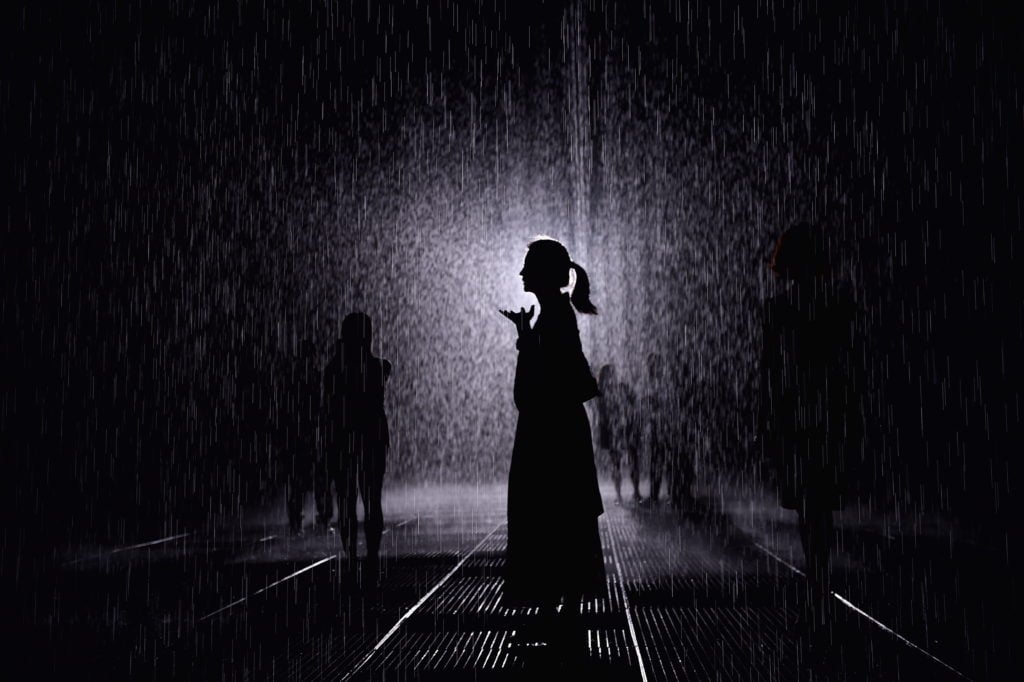
Random International’s “Rain Room” was displayed at the Yuz Museum in 2018. Photo courtesy of the Yuz Museum.
One might imagine that one reason it’s difficult to get government support for a public contemporary art museum is because so much of China’s contemporary art was made during a tumultuous chapter of the country’s history. What would you say to that?
In my understanding of contemporary art, the United States was actually very weak culturally compared to Europe, if I may say, before World War II. Since you don’t have a real history—or you only have 200-plus years of history—everything you learned was coming from Europe. But after the war, you created the Big Bang of recent cultural history. Afterward, postwar contemporary art was mostly driven by the United States.
Similarly, after Deng Xiaoping opened up the country 30 years ago, China started to be liberated economically, politically, and culturally, and you saw the contemporary art movement begin to blossom. That was a historical moment that was being recorded on canvas, in sculpture, installation, photography, video. People have started to realize that those moments are important, which is why the artworks from 1980s and ‘90s are now expensive.
But how about 50 years from now? Today’s works could be as important as those of the ‘80s and the ‘90s. My life is going to be ending—everybody’s life is ending—but the artworks will have a much longer lifespan than us, because they recorded history. It’s very special for me to be the keeper of this history.
In China, there is a “big me” and a “small me.” So, this is a “small me” speaking now; to become the “big me” you need to sacrifice yourself to contribute to the greater “me,” which is society—the world. I am also a Christian, so I believe in the Bible, and it says that giving is more blessed than receiving. Maybe because of that I experienced a miracle. All the doctors said, “You only have six months to a year,” and I’m getting better each day. So, if you were in my position, you would see why I have the urge to give. I don’t know how long I will live, but I intend to live longer.
After you were diagnosed with pancreatic cancer and you resolved to create a framework for your museum to outlive you, it seems one of the key challenges you faced was a very pragmatic one: who will pay to operate the museum once you’re gone? How willing has the government been to help fund your museum in the past?
The government never really funded my museum—their only help has been to sometimes give us very limited funds to support our cultural activities, but that is a very, very small part of our funding. Last year, we didn’t even get a cent. So the question I asked myself was, “Budi, if you are not around, who will be willing to open up their pockets to fund the museum?”
When you first founded your museum, did you realize it would be such an expensive project?
Nobody knows! After a year or two, I started to realize: wow. Yuz Museum shows are very high quality—we never compromise on the quality of the exhibitions. We’ve had many influential shows, like the Giacometti show, Warhol, KAWS recently, and even more recently, the Gucci-sponsored show curated by Maurizio Cattelan.
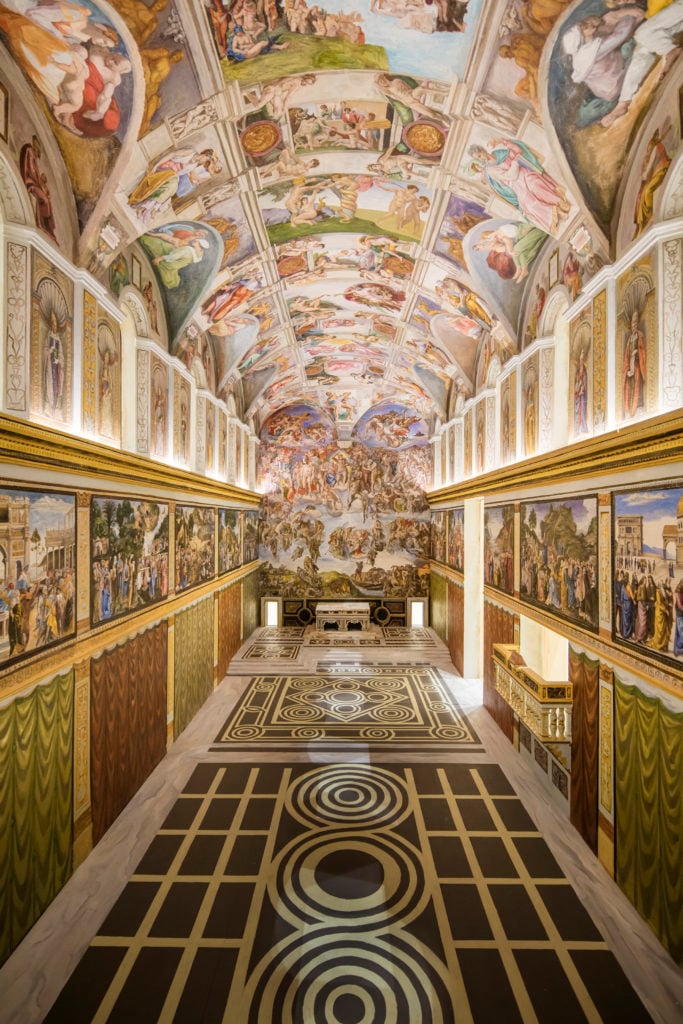
The Gucci-sponsored “The Artist Is Present” show in 2018, curated by Maurizio Cattelan. Photo courtesy of the Yuz Museum.
The Gucci show was fairly innovative, in that there are sensitivities for Western museums to do exhibitions with such clear brand sponsorship. Is there there less sensitivity around such partnerships in China?
When I deal with brands, I ask who the curator would be. If the curator is someone very commercial, I’d say no. But with Gucci, they invited Maurizio Cattelan, a great artist, to be the curator, and I collect his work and believe in him. I knew he would do a very objective and noncommercial show. It was like when “Rain Room” was sponsored in part by Volkswagen—they didn’t put any branding of their product in the museum, we just featured their name. That is our principle with sponsorship—you’ll have an established brand relationship, but you won’t see product in the show.
You were a successful businessman before you entered the museum world. What are some of the lessons from your business career that guide you as you chart the financial sustainability of your museum going forward?
Whether it’s business or not business, you need to follow your principles. I want the museum to be seen as academically sound—a respected, quality museum—rather than having people say, “Oh, this is a commercial museum.” For instance, someone might say, “I’d like to rent a space for a month to show my work”—it happens in China. But we never entertain those kind of shows, because they just want to say that they had a “show at the Yuz Museum.”
Such a show would help the artist, but it would damage your museum’s long-term credibility in exchange for a relatively ephemeral amount of money.
Yes. That is a principle we follow very closely. There was one mistake that happened when I was in the United States for my six-to-seven-month treatments, when one of my foundation’s directors let in the kind of show that put products in the museum. I let him go immediately. I said, “I’m sorry, you compromised our principle with those products.” But we’ve only had one single mistake in four years.
